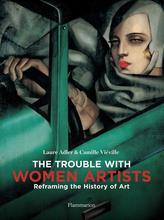More about Rosa Bonheur
- All
- Info
- Shop

Contributor
In a word, Rosa Bonheur was the coolest.
And part of the reason why she was the coolest was because her parents were so cool. Bonheur was born in 1822 to Oscar-Raymond and Sophie Bonheur. Oscar was an artist himself and Sophie was a piano teacher. The family was highly religious, but not in the Catholic, you-deserve-to-suffer way. They were part of the Saint-Simonian movement, “which adhered to Utopian socialist values and supported a vision of universal harmony that included total sexual equality.” In the 1830s!!!
Oscar wasn’t just all talk either. He was the director of the only free all girls drawing school in Paris. This set the tone for Rosa’s life of flipping the bird to societal norms. She began drawing as soon as she could hold a pencil. When her mother died, Rosa was sent to two different boarding schools, both of which expelled her. The first one was run by a woman by the name of Madame. Gilbert. Rosa said of her expulsion from there: “The Gilberts refused to harbor any longer such a noisy creature as I and sent me back home in disgrace...my tomboy manners had an unfortunate influence on my companions, who soon grew turbulent. " But can you blame Rosa? I imagine there are few things as fun as offending Victorian society members.
After her father accepted the fact that his daughter was never going to make it in a formal educational setting, he began to teach her himself. When she had learned all he could teach her, he sent her to study at the Louvre in Paris. By this time, Rosa knew her affinity for animals and in her Paris apartment she kept “a goat, chickens, quail, canaries and finches.” She began painting at horse fairs, (hence the painting The Horse Fair) and in slaughterhouses. Soon her paintings would contain animals only. Because being in a dress in these environments was tricky, she had to get a permit from the French police to dress in pants, which was illegal for a woman at that point. At one point she was arrested while wearing a dress because an officer thought she was a man dressed as a woman. She just couldn't win.
In 1842, she met the woman who was probably the love of her life, Nathalie Micas. Rosa’s father was commissioned to paint her and after they met, the two were inseparable for 50 years. Nathalie tended to Rosa’s needs so that she could focus on her painting. This obviously worked for Rosa because she started exhibiting work and winning medals at the Paris Salon. She started making enough money to travel and to make even more paintings to sell.
When Micas died in 1889, Bonheur mourned the loss heavily. But after a few months, she met who was to be her next long term companion, Anna Klumpke. She was, as Bonheur termed it, a “sister of the brush,” meaning that she was also a painter. Klumpke had been a huge fan of Rosa growing up to the point that she had a “Rosa” doll, which I’m severely jealous of. The two women lived together until Rosa’s death in 1899. Klumpke was the heir of Bonheur’s estate and published her biography, Rosa Bonheur: Sa vie et son oeuvre (which means "her life and her work"). When asked why she preferred the company of women, Bonheur replied, "As far as males go, I only like the bulls I paint."
All in all, Rosa was a Victorian era cross-dressing, cigar-smoking, animal-loving, feminist legend, who we must bow down to always.
Sources
- Blume, Mary. "The Rise And Fall Of Rosa Bonheur." Nytimes.com. N.p., 1997. Web. 7 Sept. 2018.
- Chernick, Karen. "The Portrait That Forged A “Divine Marriage” Between Two 19Th-Century Women Painters." Hyperallergic. N.p., 2018. Web. 7 Sept. 2018.
- "Rosa Bonheur - Biography, Quotations & Art - The Art History Archive." Arthistoryarchive.com. N.p., 2018. Web. 7 Sept. 2018.
- "Rosa Bonheur | Encyclopedia.Com." Encyclopedia.com. N.p., 2004. Web. 7 Sept. 2018.
- Van Buskirk, Cheryl. "Rosa Bonheur's Life And Legacy." The Art Story. N.p., 2018. Web. 7 Sept. 2018.
Featured Content
Here is what Wikipedia says about Rosa Bonheur
Rosa Bonheur (born Marie-Rosalie Bonheur; 16 March 1822 – 25 May 1899) was a French artist known best as a painter of animals (animalière). She also made sculptures in a realist style. Her paintings include Ploughing in the Nivernais, first exhibited at the Salon of 1849, and now in the Musée d'Orsay in Paris, and The Horse Fair (in French: Le marché aux chevaux), which was exhibited at the Salon of 1853 (finished in 1855) and is now in the Metropolitan Museum of Art in New York City. Bonheur was widely considered to be the most famous female painter of the nineteenth century.
It has been claimed that Bonheur was openly lesbian, as she lived with her partner Nathalie Micas for over 40 years until Micas's death. After that she lived with American painter Anna Elizabeth Klumpke. However, others assert that nothing supports this claim.
Check out the full Wikipedia article about Rosa Bonheur

























